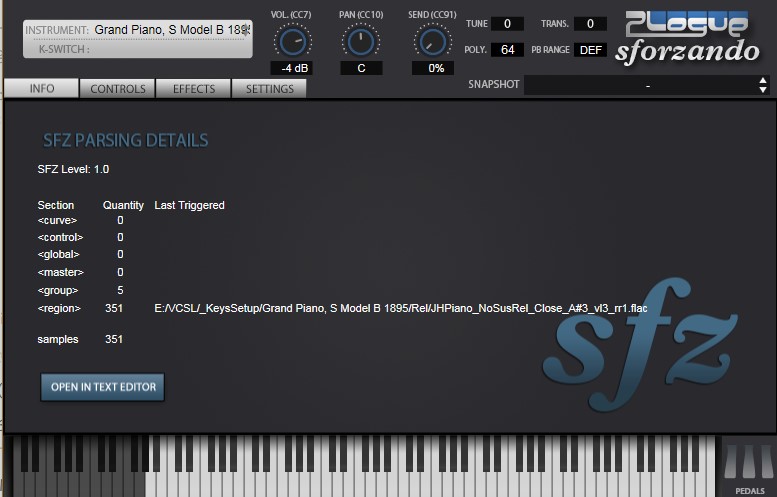The Recorder’s performer, Emily O’Brien, reached out with some instructions on how to load and use The Recorder: CE in Musescore:
Musescore 3
- Find the folder labeled SoundFonts (/Documents/MuseScore/Soundfonts) and copy the contents of the “Recorder_CE” folder into it.
- Open MuseScore, go to the “view” menue and click “synthesizer”
- Click on the “zerberus” tab, and then click “add”.
- Select the desired instrument from the list of .sfz files. Note that the included articulation options are listed as separate files, i.e “Recorder_Alto-440B_Sus.sfz” for baroque alto sustained notes (best for generic all-around use) vs “Recorder_Alto-440B_SusAc.sfz” for baroque alto sustained notes with an accented articulation at the beginning, etc. Click “load”.
- Click “Save to score”.
- To hear a part played with that sound, open the mixer panel (view menu) and click on the box for that part. Then select the instrument from the menu.
Musescore 4
The removal of direct SFZ support in Musescore 4 means you’ll need to follow the normal procedure for all music software, i.e. installing then using the free Sforzando plugin by Plogue inside Musescore to load up sounds.
This from the MuseScore manual:
A note on the Zerberus player and SFZs Users of MuseScore 3.6 and earlier may be accustomed to using the Zerberus player, which supports the .sfz file format. In building a new system that now supports VST instruments, changes were required that necessitated the removal of the Zerberus player, as well as the Synthesizer found in previous versions of MuseScore. Consequently, some functionality has been lost in this process, including the ability to map specific instrument sounds like pizzicato and tremolo to specific MIDI channels.
Our highest priority in future releases of MuseScore 4 is to again support this functionality for VST, SoundFont and the Muse Sounds libraries. Users who rely extensively on mapping .sfz sounds to specific performance directions are advised to continue using earlier versions of MuseScore until we re-enable this capability in MuseScore 4.
It is worth mentioning that the new systems we are planning will be much more flexible, easy to use and powerful than those found in MuseScore 3. For those who wish to still use SFZ sounds in MuseScore 4, good alternatives for Windows and macOs would be the VST/AU sampler Sforzando, both of which support SFZ playback. Currently, the use of SFZ is not possible in MuseScore4 for Linux [[note: there is now a Linux version of Sforzando under BETA, but your mileage may vary]].

